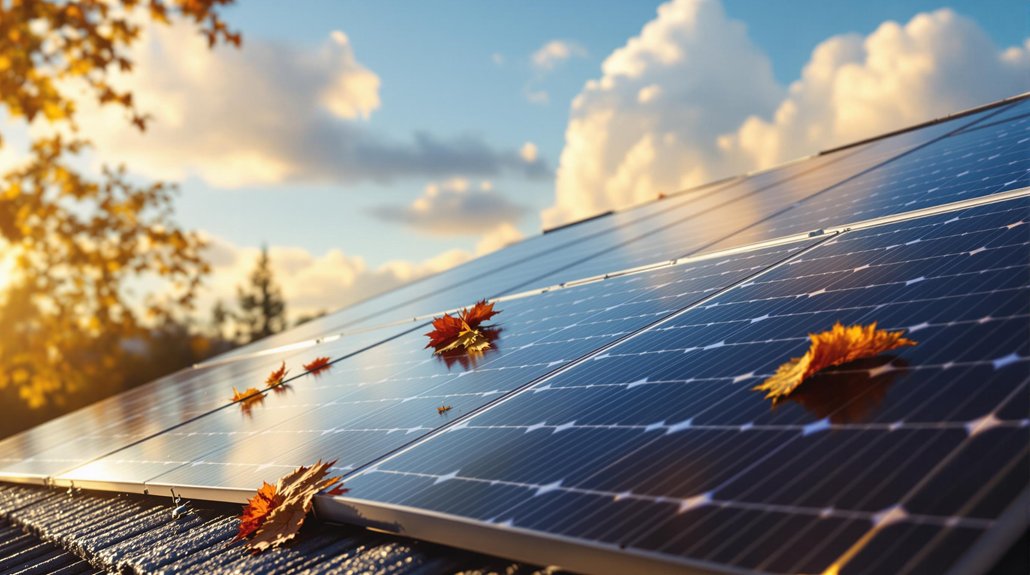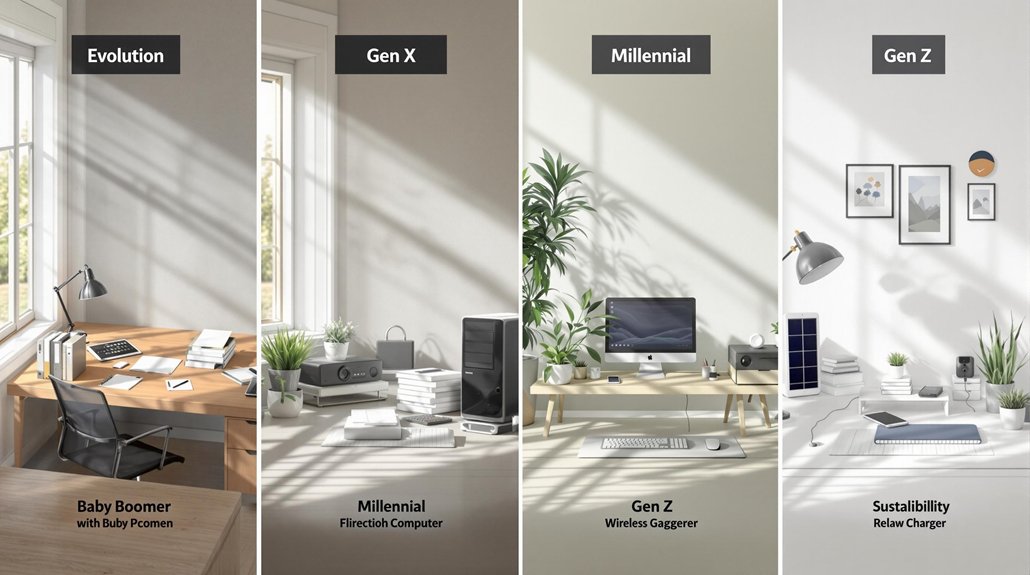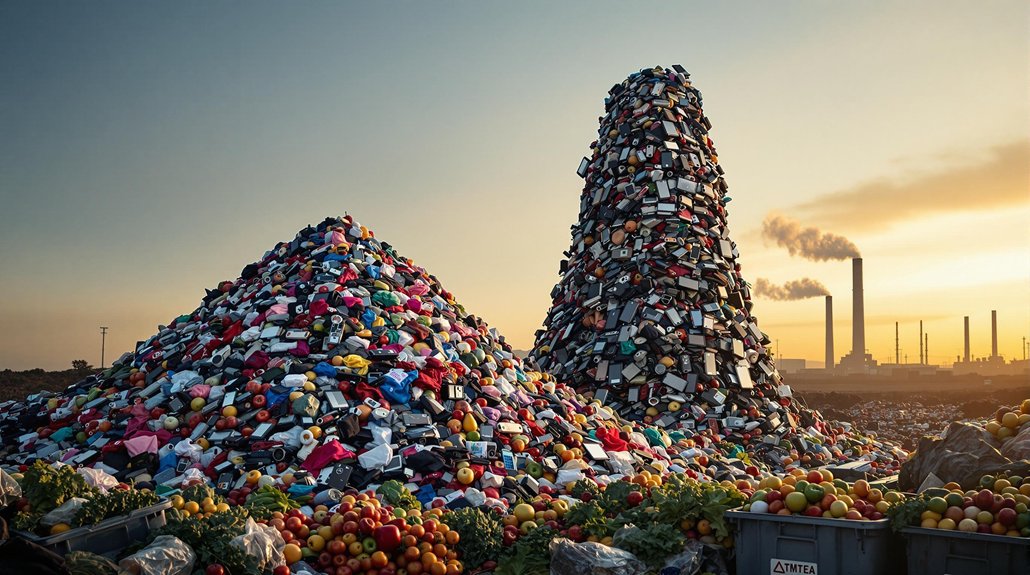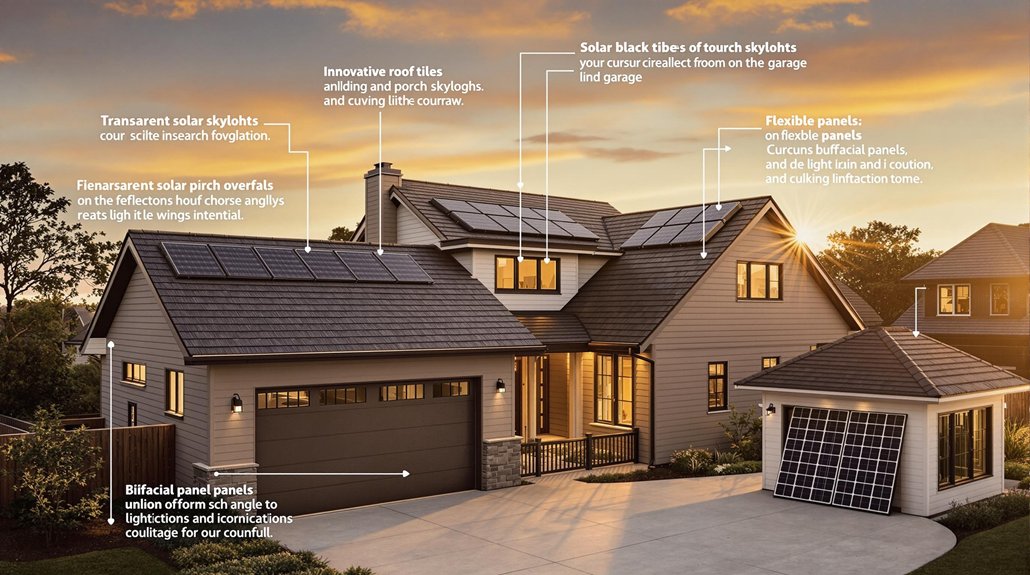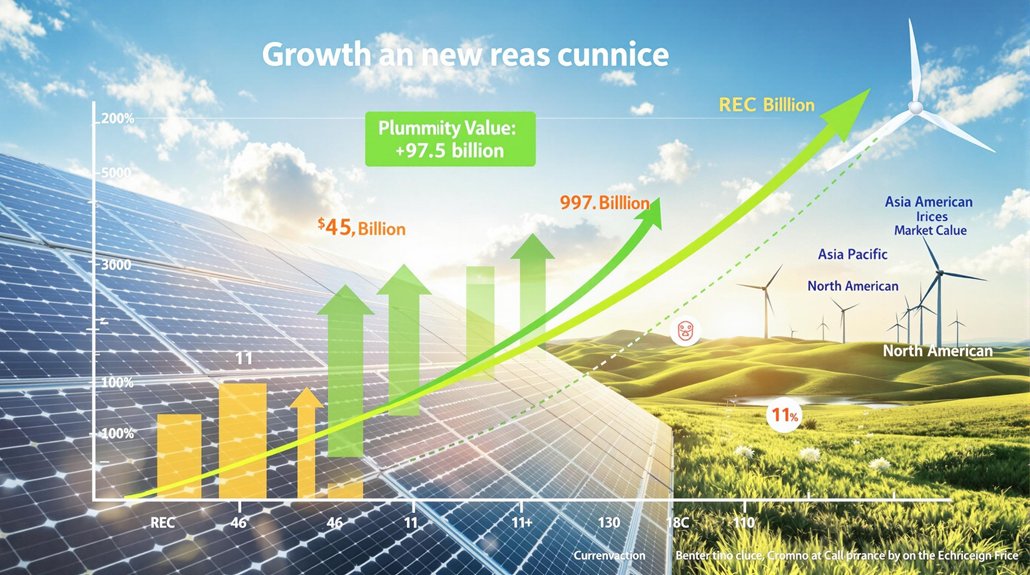Solar panels have come a long way since their invention. Early models converted just 6% of sunlight into electricity, while today’s versions reach nearly 23% efficiency. Prices have dropped 70% in the past decade, making the average home system about $20,000. Most solar installations pay for themselves within 7-10 years and can last over 40 years. These sun-powered devices offset their manufacturing emissions in just 1-4 years. More fascinating developments await on the horizon.
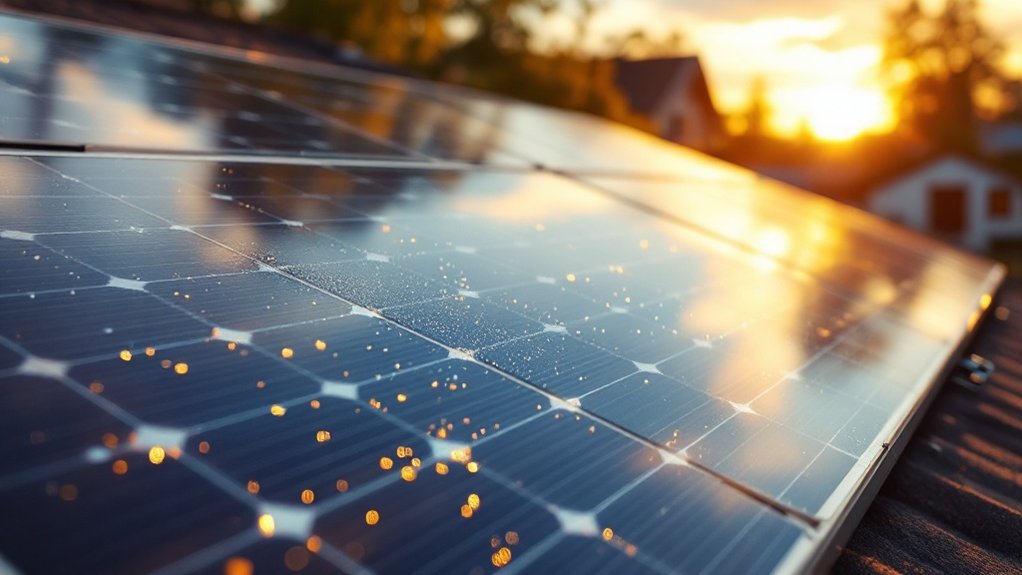
The world of solar energy continues to shine brighter each year. Solar panels have improved dramatically since their early days. Modern panels convert 15-22% of sunlight into electricity, compared to just 6% in early models. The most efficient panels now reach 22.8% efficiency, though these premium options typically cost more.
Solar panel prices have fallen 70% over the past decade. An average home system costs about $20,000, but can save homeowners $10,000-$30,000 over its lifetime. Most systems pay for themselves in 7-10 years, and there’s a 30% federal tax credit available through 2032.
Did you know solar panels work on cloudy days? They’re less efficient without direct sunlight, but still generate power. Curiously, panels actually perform better in cooler temperatures. With proper maintenance, they can last over 40 years, though most warranties cover 25-30 years.
The history of solar technology is fascinating. The first solar cell was invented in 1883 by Charles Fritts. Later, the space industry drove major advancements in solar technology for satellites and space stations. Ancient Greeks also used passive solar designs in their homes thousands of years ago. Solar panels convert sunlight into DC electricity before it’s transformed into AC power usable in homes.
Solar energy is incredibly abundant. The Earth receives 173,000 terawatts of solar energy continuously. In just one hour, our planet gets enough sunlight to power the entire world for a full year.
The environmental benefits are significant. Solar panels produce zero emissions while operating. Though manufacturing creates some carbon footprint, panels offset this in just 1-4 years. Over their 30+ year lifespan, they’re 86-96% carbon neutral.
The solar industry is growing rapidly. The U.S. surpassed 2 million installations in 2019 and is expected to reach 4 million by 2023. Solar added 53% of all new electric capacity in 2023. Revolutionary innovations include a six-junction solar cell created in 2020 that achieved nearly 50% efficiency. Experts project that new technologies will push efficiency averages to 30-40% by the end of this decade.
The industry creates jobs five times faster than the overall job market, with capacity projected to quadruple by 2030.
Frequently Asked Questions
Can Solar Panels Work During Cloudy or Rainy Days?
Solar panels can work during cloudy or rainy days, though they’re less efficient.
On cloudy days, panels typically generate 10-25% of their normal output using diffuse light. Rain actually helps clean the panels, improving their performance over time.
Some factors affect cloudy day performance including panel technology, cloud thickness, and geographic location. High-efficiency panels perform better in low light conditions than standard models.
How Long Do Solar Panels Typically Last Before Needing Replacement?
Solar panels typically last 25-30 years before needing replacement.
They don’t stop working completely after this time but produce electricity at reduced efficiency.
Most panels degrade by 0.5% to 0.8% annually, while premium models may degrade as little as 0.3% per year.
Manufacturers typically offer 25-year warranties guaranteeing 90% production for the first 10 years and 80% for the remaining period.
Do Solar Panels Require Regular Maintenance or Cleaning?
Solar panels need minimal maintenance. They typically require cleaning 1-2 times per year with soft brushes and mild soap.
Cleaning frequency depends on local conditions, with dusty areas needing more attention. Regular cleaning can improve efficiency by 3-5%, while dirty panels may lose up to 25% of energy production.
Annual inspections help identify potential problems. Inverters might need replacement after 10-15 years.
Can I Install Solar Panels Myself or Need Professional Help?
While DIY solar panel installation is possible for small off-grid systems, it’s risky for most homeowners.
Self-installation requires technical expertise, takes weeks, and may void warranties. Most areas require permits and inspections.
Professional installers complete jobs faster (1-3 days), handle paperwork, and provide warranties.
Grid-tied systems are more complex than off-grid setups. Local regulations often require licensed electricians for certain parts of the installation.
What Happens to Excess Energy My Solar Panels Produce?
Excess solar energy can be handled in several ways.
With net metering, extra power goes to the electric grid, earning credits on future bills.
Battery storage systems capture surplus energy for nighttime use or power outages.
Homeowners can also practice load shifting, running appliances during peak production hours.
In some areas, utilities pay for grid support when excess solar helps meet community electricity demand.
